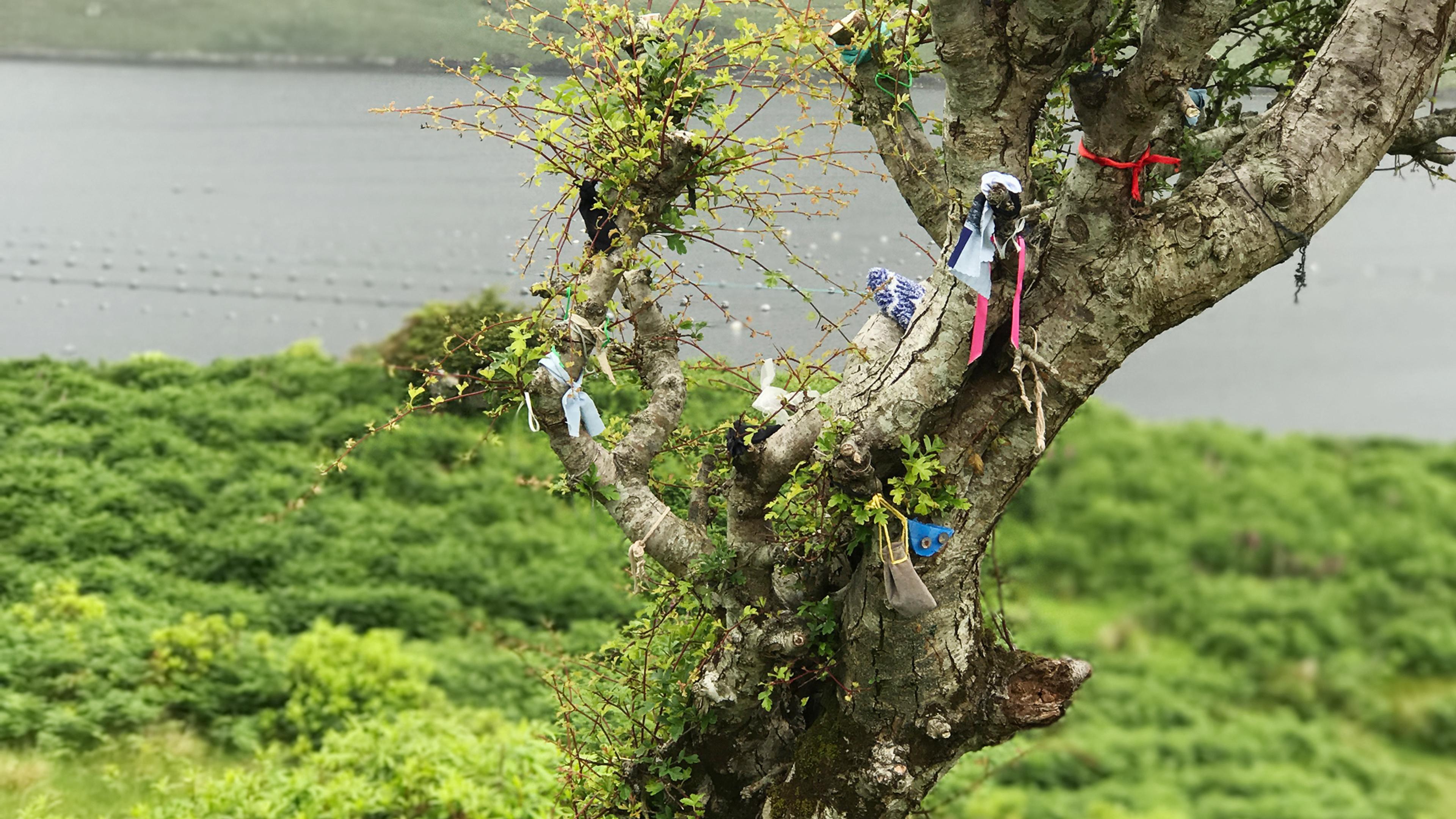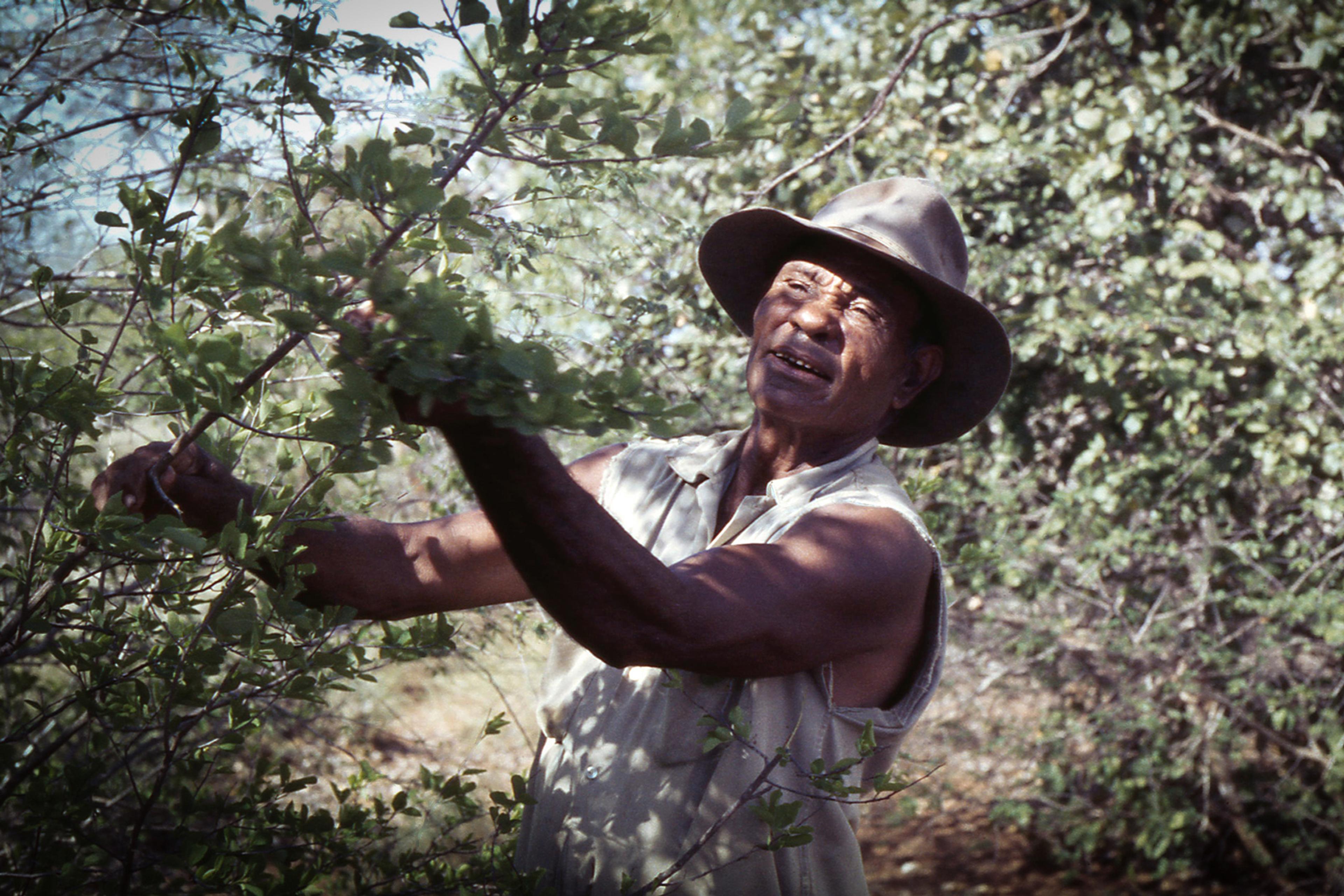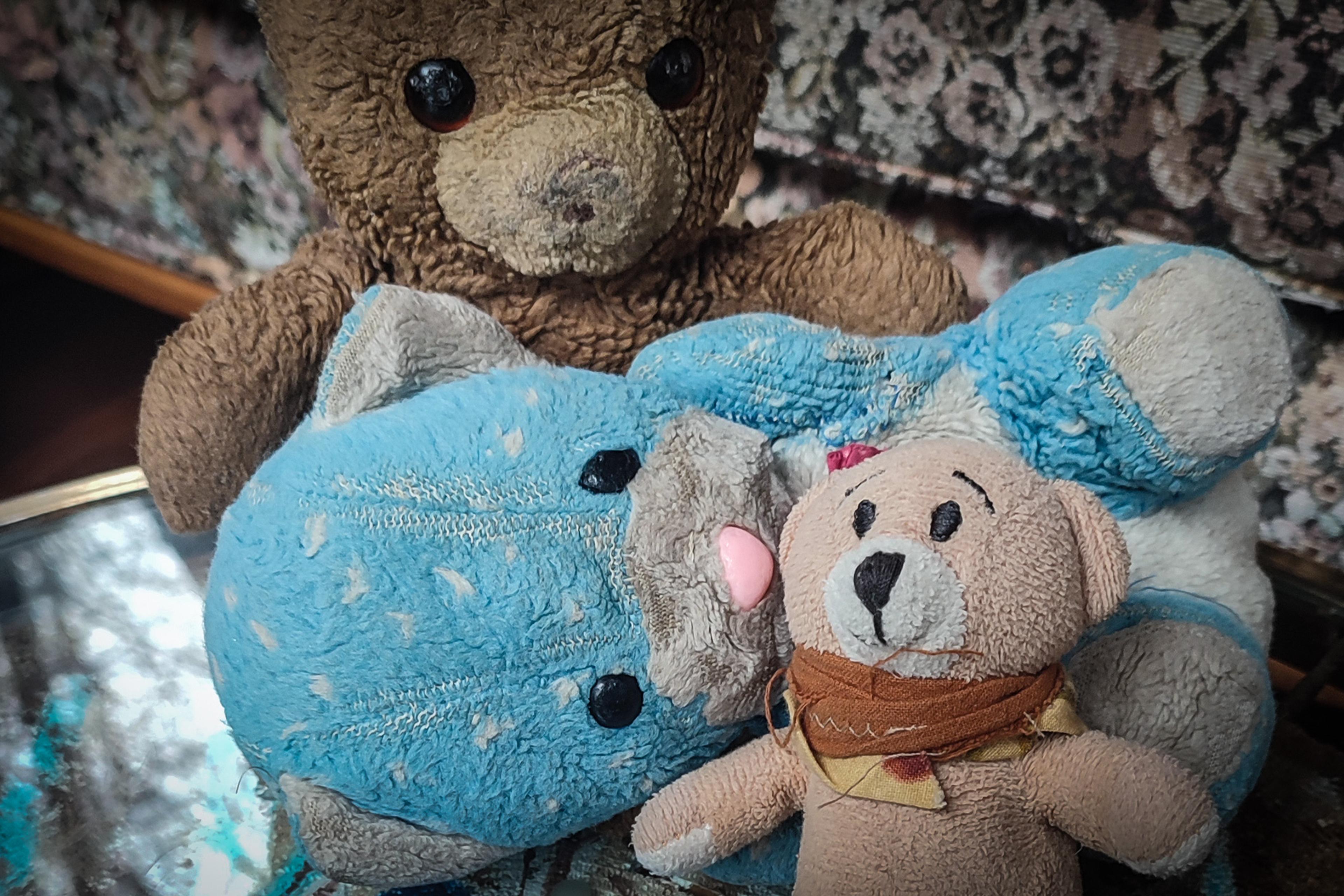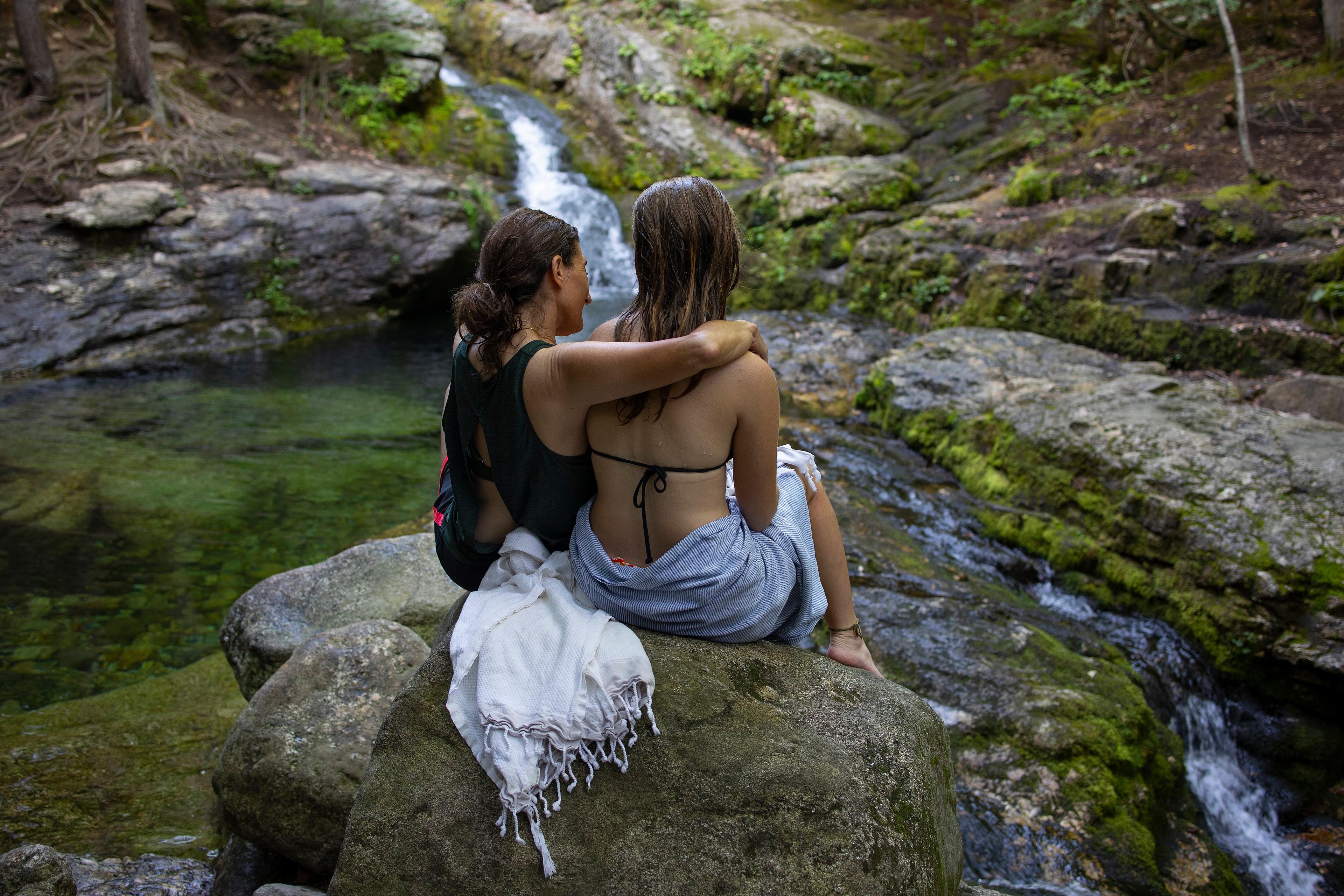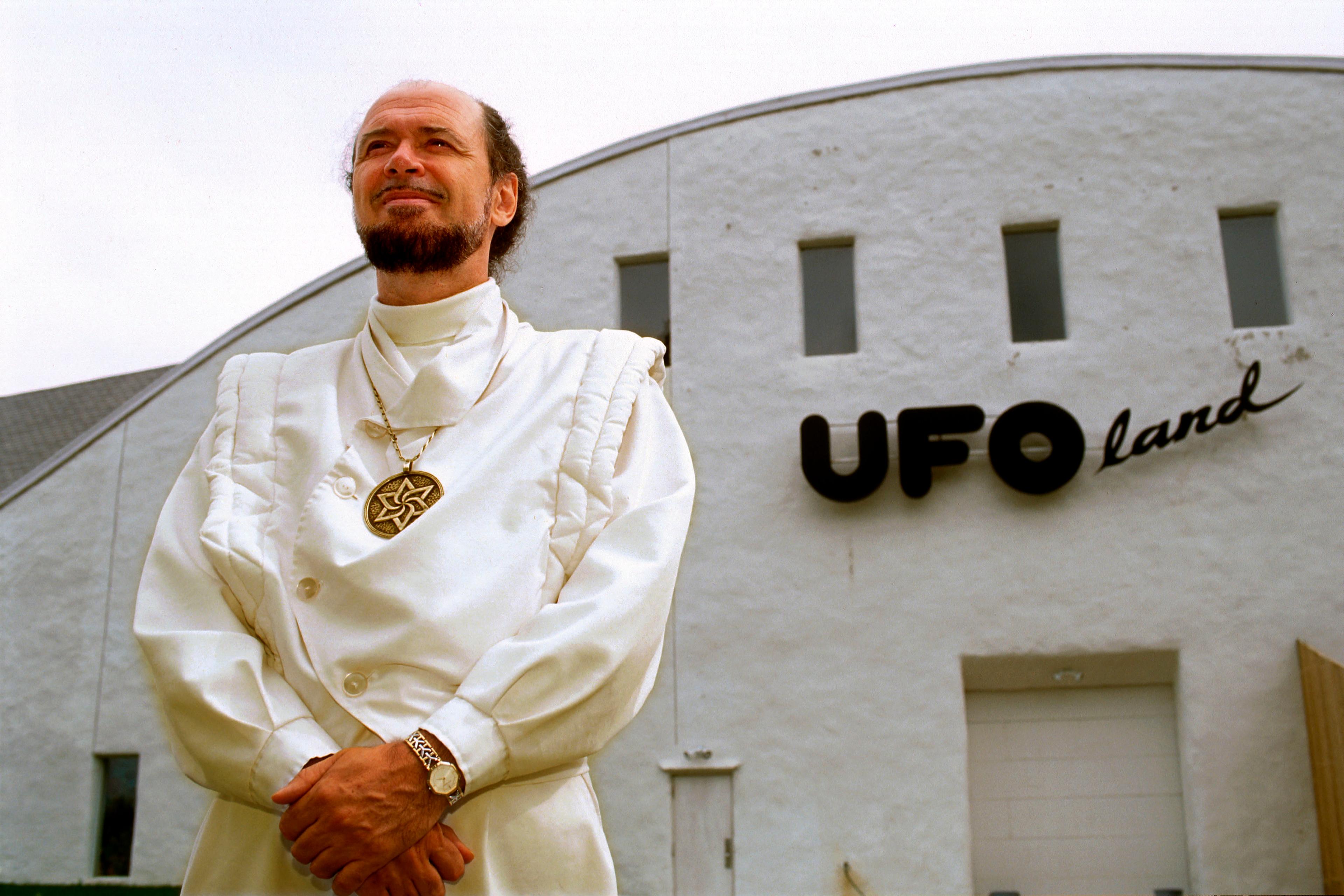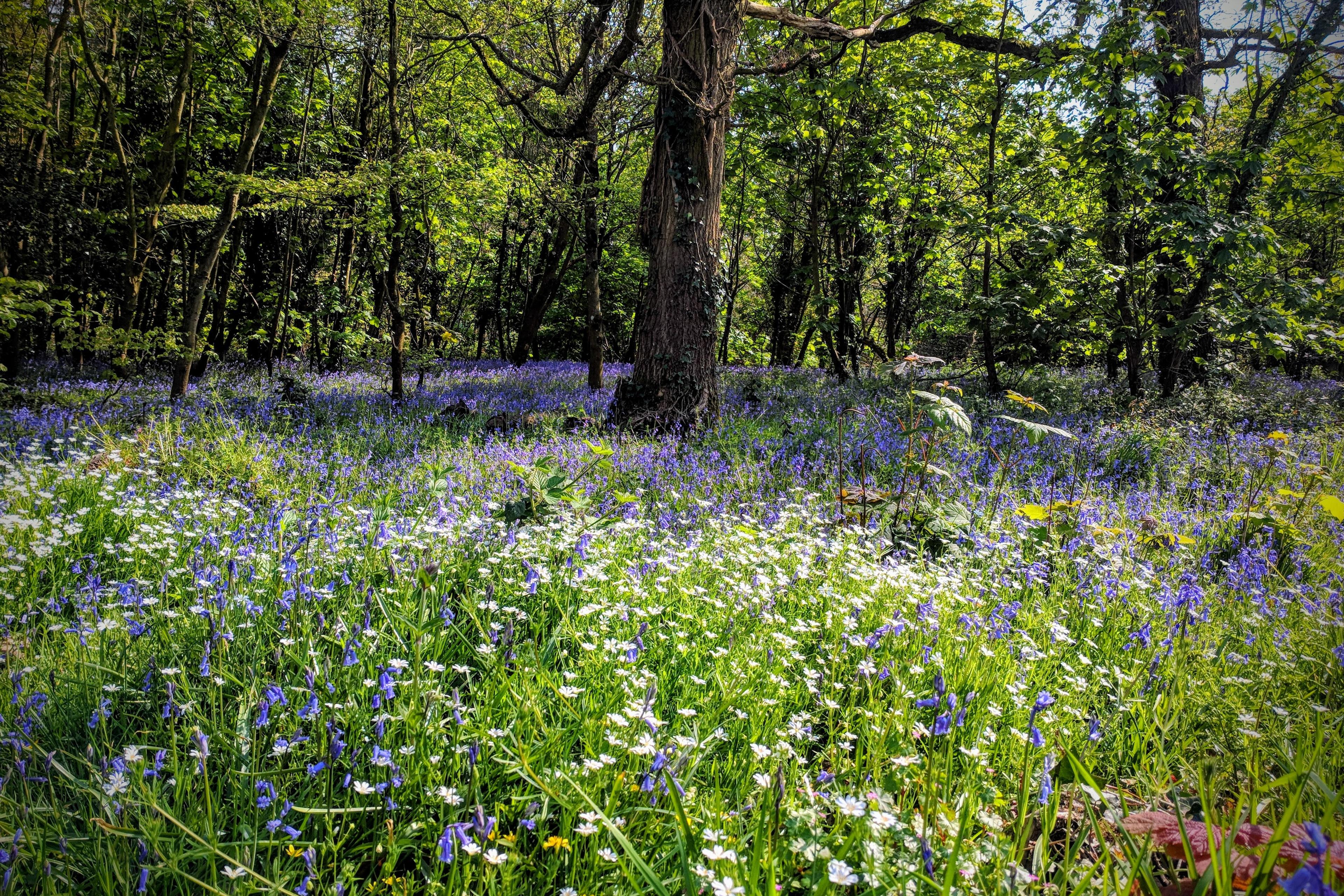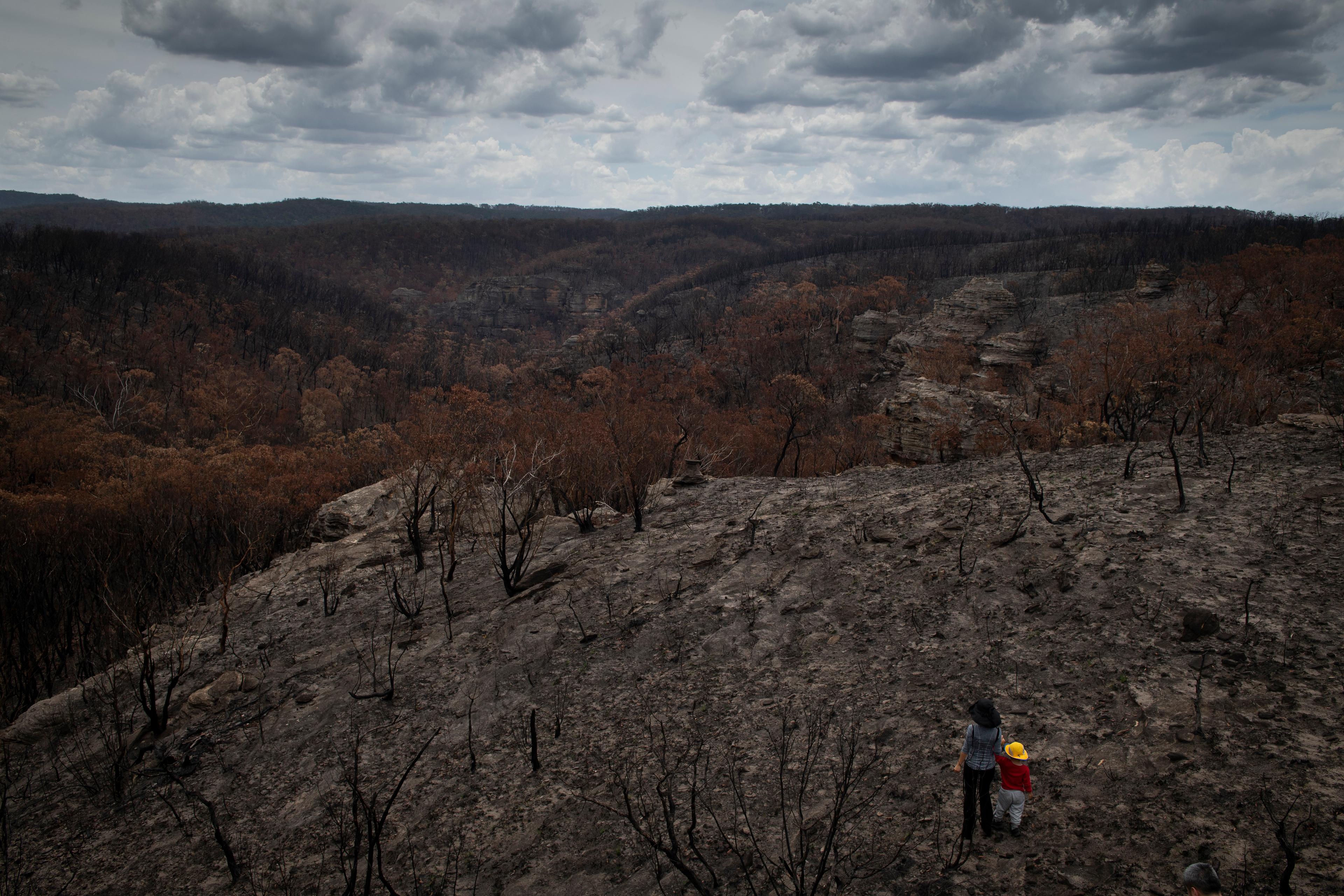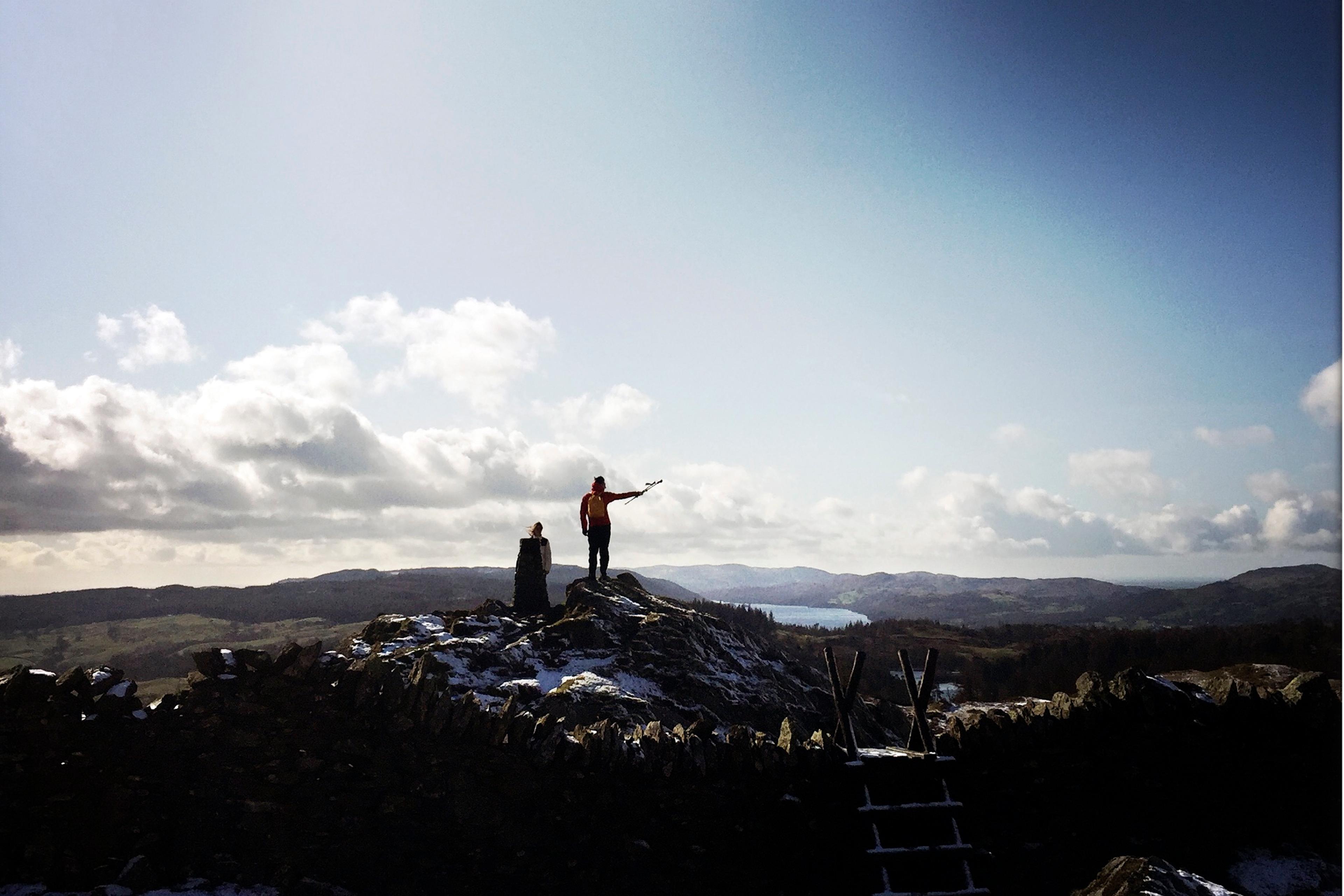Most Irish people, writes the folklorist Eddie Lenihan, ‘have some instinctive belief in the world of the fairies, even if sometimes it has to be excavated carefully from under a veneer of busy modernity.’ According to Lenihan, one of Ireland’s last seanchaithe (oral storytellers and historians), fairies are not the remains of a bygone Pagan culture. Their world thrives, underfoot, in earthen mounds and woodlands.
Today, as ‘busy modernity’ poses acute ecological threats to Earth, a resurgent reverence for the fairies of the Otherworld is being repurposed to meet the environmental challenges of the 21st century. Unlike in other parts of Europe, where the certainties of scientific evidence tend to drive environmental activism, much of Ireland’s environmentalism is distinctly spiritual. When Irish Pagans protest ecological destruction, it is not only to avert calculable losses caused by land-use changes. It is also to avoid invoking the wrath of fairies.
To most, however, the mention of fairies calls to mind children’s fantasies and flitting figures from Disney movies rather than the powerful, dangerous beings of Irish lore. And so, as I did when I first learned about fairy wrath and eco-activism in Ireland, perhaps you’re also wondering: how serious can this really be?
For Ireland’s indigenous Pagans, it’s deadly serious.
When I arrived in Ireland in early 2023, I hailed a taxi at the airport and the driver, a friendly middle-aged man named Patrick, asked why I had come. Somewhat cautiously, I told him that I was an anthropologist studying Paganism.
‘Oh, I’m a Pagan,’ he volunteered.
I’d expected to meet Pagans in a meadow or a forest, not in a Dublin cab. But Paganism, Patrick told me, was everywhere in Ireland. ‘It’s part of us, who we are.’
This may come as a surprise to those who more readily associate Ireland with fervent Catholicism and Protestantism – and Paganism with prehistoric monuments and long-dead druids. But in modern Ireland, Pagan beliefs and practices still run deep.
The core belief of Irish Paganism is that ‘nature’ provides access to the spiritual realm
One reason why these beliefs have endured is geography: the island’s relatively remote location allowed it to remain, as the folklorist Jane Wilde wrote in 1887, ‘longer in the possession of the Druidic mysteries than any other nation of Europe.’ Another reason is syncretism: Pagan beliefs were easily disguised as they merged with institutional religion. Even after Christianity arrived in the early 5th century, Indigenous beliefs endured as elements of pre-Christian Paganism were integrated with Roman Catholicism. Trees, wells, mountains and other sacred landscapes became overlaid with Catholic symbolism, just as the Pagan goddess Brigid was adopted as a saint by the early Irish Church (and is still celebrated by Irish Catholics on 1 February each year).
The core belief of Irish Paganism is that ‘nature’ – whether in the form of a forest, a rock, a hill or a tended garden – provides access to the spiritual realm. As the Pagan author Aedh Rua writes in Celtic Flame (2008): ‘Nature is not a dead collection of objects, but is instead filled with spirits, many of which are able to interact with humankind.’
In a landscape inhabited by powerful spirits, humans learn to tread more carefully or face retributive justice from the Otherworld. For Irish folklorists and Pagans, fairies can bite back.
On a blustery winter day in 2023, Alan Wells welcomed me into his home in County Tipperary, in central Ireland. Short and shoeless, with gripping steel-blue eyes, Wells told me he identifies as an ‘Indigenous Irish Pagan’. His spiritual practice is centred around a connection with the land and a respect for the Otherworld and its inhabitants, especially fairy spirits.
According to Pagan mythology, a race of beings called the Tuatha Dé Danann ruled Ireland long ago. When humans came to the island, the Tuatha Dé Danann became fairies as they retreated to a spiritual realm on Earth called the Otherworld. This world – a parallel, invisible Ireland – ‘is very much here,’ Wells told me.
Scholars have interpreted the fairies as ancestral deities, semi-divine beings and nature spirits. Unlike the transcendent creator god of Abrahamic religions, the Irish fairies are best understood as immanent, co-existent and co-dependent with Earth itself. Irish lore marks certain features of the landscape, like ‘fairy trees’ and ‘fairy forts’, as fairy property. Hawthorn and ash trees, especially those standing alone in a field, are considered ‘fairy trees’, and local tradition involves making wishes by tying cloth to their branches. Likewise, more than 45,000 ‘fairy forts’ are scattered around Ireland, which archaeologists have identified as the ruins of circular stone dwellings or animal enclosures from the Iron Age. Ireland’s Pagans believe that disrespecting or trampling upon these sacred sites can cause fairies to respond, sometimes violently. Folklore is filled with stories of misfortune – including sickness, soured milk, relationship troubles, even death – that befell those who trespassed on fairy property.
The ‘land healer’ works to resolve disputes between humans and the fairies, whom he calls the Good Folk
Sharing the land with fairy spirits makes it necessary to learn how to avoid their wrath. At a Pagan stone circle in County Limerick, I met a woman who told me that she grew up making daisy chains and placing them at fairy forts, ‘so you can play there without being harmed by the fairies.’ It was common knowledge, she said, just ‘something Irish children do.’ While sifting through records in the National Folklore Collection in Dublin, I found a note written by a child in 1938 describing what ‘being harmed’ could mean:
There is a fairy fort in our school district … I heard my father saying that Mr John Walsh, Loglea, was digging it one day. When he began to dig he got an inward pain. He went home and to bed. He did not get better. He died.
In traditional Irish culture, ‘fairy doctors’ within the community were responsible for helping others navigate the delicate relationships with inhabitants of the Otherworld. Today, Wells carries out some of the traditional functions of an Irish fairy doctor, though he describes himself as a ‘land healer’. He works to resolve disputes between humans and the fairies, whom he calls the Sídhe, the Good Folk, or Them. ‘I would work a good bit with Them,’ he told me. ‘But it’s a difficult relationship.’
Wells believes that the Sídhe can cause social or physical problems for humans as retribution for disrespect, and local people will sometimes ask him to spiritually clear their property if they’ve been struggling with illness, family strife or other hardships. But he sees his role as aiding the fairies, rather than the humans ‘because oftentimes the problems are caused by the people, not by the Sídhe.’ And besides, he added, laughing, ‘they were here first.’
The human activities that Wells identifies as offensive to the fairies are noted in Irish folklore, and they are all related to environmental destruction or land-use changes – activities likewise opposed by environmentalists and eco-activists. Conflicts with the Sídhe can be caused, Wells said, by cutting down plants like hawthorns, or ‘putting too much metal into the ground, which happens a lot with new builds.’ There would be trouble, he said, if a large metal frame is erected where there was a fairy path. ‘It might be that the Good Folk are suffering more than the people, but they will make the people suffer!’
Because the fairy fort was so close to their home, he advised them to make a traditional offering of butter
According to Wells, many problems with the Sídhe could be resolved simply by ‘acknowledging and having the respect, not just for the land, but for Them.’ At other times, though, Wells determines that people must actively make amends.
He told me about a case in which a family requested his help to spiritually clear their house, which had been built at the base of a hill. ‘I realised at the top of the hill there was a fort,’ Wells told me. ‘And the people in the house had experienced a lot of bad fortune over the years.’ Because the fairy fort was so close to their home, he advised them to make a traditional offering of butter to the fairies. He wasn’t sure how the family would respond to this suggestion, but they were willing. One of the family members ‘went up in the tractor, up the field to the fort, and left their offering.’ This is evidence, Alan said, that the fairy faith is still thriving in Ireland. ‘People mightn’t talk about it so much, but it’s very much alive.’
For Pagans, the fairy trees and fairy forts dotted across Ireland are access points to the spiritual realm of the Otherworld and must be treated with special respect. Any harm to them can cut off humanity from the spirit world and stoke the vengeance of the fairies. However, in more serious cases – such as the construction of massive infrastructure projects – an offering of butter is not sufficient. It is here that Pagan concerns for the Otherworld begin to overlap even further with activists’ concerns about the environment.
Ireland’s Boyne Valley, named for the mythical Boyne River, is a quilt of sheep-speckled green fields, stitched with stone walls. This region, in the north-eastern edge of the Republic, is known as Ireland’s Ancient East and is home to some of the most significant Neolithic monuments in the country, which are all connected to Ireland’s Pagan history.
Despite its immense heritage value, the Boyne Valley has been repeatedly scarred by the construction of modern motorways. Local community groups have been at the forefront of a national fight against the proposed routes of roadways cutting through the region, leading to bureaucratic battles lasting for decades and drawing international attention.
Rather than risk interfering with the Otherworld, 25 labourers went on strike and returned to work only when the road was rerouted
After construction began in 2007 on a four-lane highway called the M3, various misfortunes befell the government officials responsible for the new road. One was held up at gunpoint; another nearly fell from a helicopter. Folklorists claimed that these incidents were caused by a fairy curse, since the highway’s construction had desecrated fairy forts in the area. One activist told reporters that the curse would remain as long as Ireland ‘continues to meddle with sacred ground’. In an incident that shimmers with Pagan poetic justice, an official was struck by a falling tree when a fairy fort started to be cleared. Since then, one politician has even advocated for the fairies. In 2017, when a stretch of the N22 roadway in southwest Ireland started to sink, Danny Healy-Rae, an independent member of the Irish parliament, asserted that the subsidence was a result of the disturbance of fairy forts in the area.
Pagan resistance to large-scale development and environmental destruction has a long legacy in Ireland. In 1959, a new road in County Mayo was being built, with plans to destroy a fairy fort in the process. Rather than risk interfering with the domain of the Otherworld, 25 labourers went on strike and returned to work only when the road was subsequently rerouted. A similar ruckus arose in 1999, when the proposed route of a $20 million motorway in County Clare was adjusted to avoid uprooting a single thorn bush that Lenihan believed was ‘a marker in a fairy path’. The folklorist warned that retribution, in the form of human casualties, would follow if the shrub was destroyed, telling The Irish Times: ‘It is sacred ground, it doesn’t revert to being a normal place.’ Respecting fairy property often coincides with resisting reckless human activity and environmental destruction.
It may seem that Paganism has returned to Ireland. But the truth is, it never really went away. What is new about this modern resurgence is that it has become an Indigenous European response to ecological destruction. Paganism in Ireland once served the needs of an agricultural society, but the lives of Irish people have since changed. Paganism, as an Indigenous environmental philosophy, is motivating new forms of environmental activism.
For Wells, practising Indigeneity means recognising fairy spirits and honouring the needs of the land. ‘Indigeneity comes from where you live, and how immersed you are in where you live,’ he told me. For those who locate spirituality within nature, the act of reclaiming responsibility for Earth’s spiritual wellbeing becomes a potent motivator of conservation.
The worldview of Irish Paganism insists upon the mysterious sanctity of nature, not only the functions, ecological relationships or calculable values described by science. Aligned with Indigenous traditions around the globe, Irish Pagans acknowledge and respect spirits in the nonhuman world, even when they can’t measure or confirm the existence of beings such as wrathful fairies. Finding an Otherworld beneath a veneer of ‘busy modernity’ is not an act of the imagination. For some, it’s the foundation of a new relationship with Earth, built on a respect for Them, and a belief that the living world around us sometimes exacts its own forms of justice.
‘One who knowingly interferes with fairy property,’ Lenihan writes in Meeting the Other Crowd (2004), ‘must be prepared for the consequences.’
